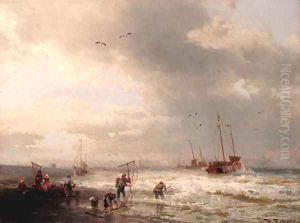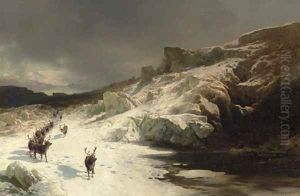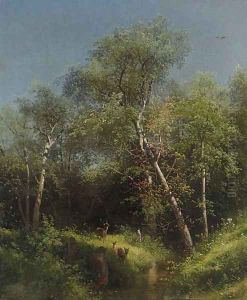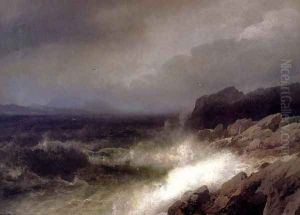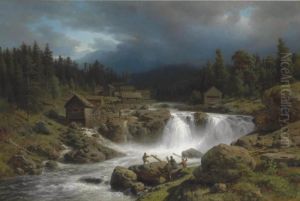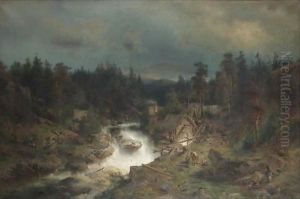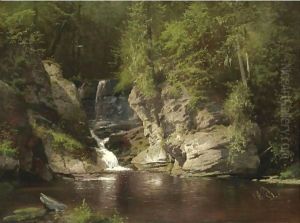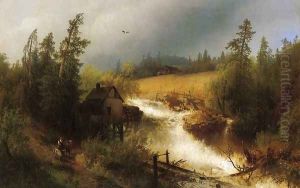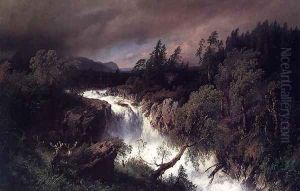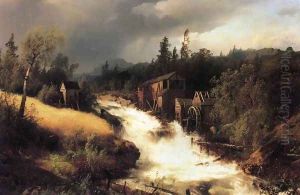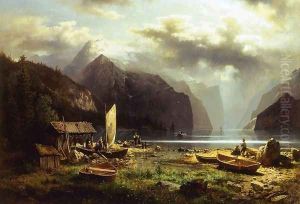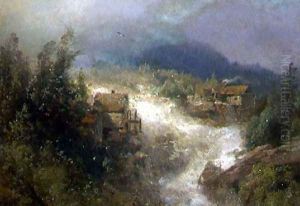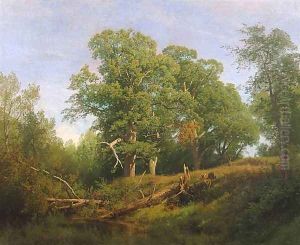Herman Herzog Paintings
Herman Herzog was a prominent German-American landscape painter, known for his captivating landscapes, seascapes, and depictions of wildlife. Born in Bremen, Germany, in 1832, Herzog showed an early interest in art, which led to his studies at the Düsseldorf Academy, one of the leading art schools in Germany at the time. His education under influential teachers, combined with his natural talent, honed his skills in landscape painting, a genre that he would excel in throughout his career. After establishing himself in Europe, Herzog immigrated to the United States in the late 1860s, where he would spend the majority of his life. He traveled extensively across the country, drawing inspiration from the diverse American landscapes, from the rugged terrains of the West to the serene settings of the East Coast. Herzog's ability to capture the essence of these landscapes, with meticulous attention to detail and a masterful use of light, earned him widespread acclaim. Throughout his career, Herzog exhibited his work in both the United States and Europe, receiving numerous awards and honors. His paintings were well-received by both critics and the public, and he was known for his ability to depict the majesty of nature in a realistic yet poetic manner. Despite his success, Herzog remained relatively modest about his achievements and focused on his art, leaving behind a significant body of work that continues to be admired for its beauty and technical skill. Herman Herzog's legacy lives on through his paintings, which are held in high regard in museums and private collections around the world. He passed away in 1932 at the age of 100, leaving behind a rich legacy that continues to inspire and captivate art enthusiasts and collectors. His contribution to the landscape genre and his unique vision of the natural world remain significant in the history of American art.

